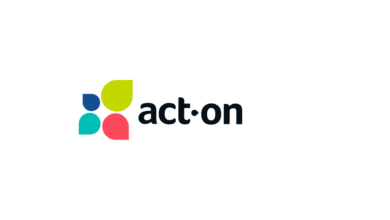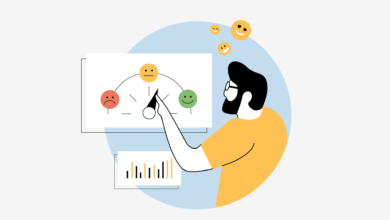9 Things to Assess When Auditing Your CX Technology

Customers have high and ever-changing expectations about their experience with your brand. As brands strive to build stronger connections and increase engagement, technology plays a key role in supporting these efforts. However, it is important to remember that the customer experience is driven by emotions, feelings and perceptions: technology simply facilitates and enhances this experience.
Follow with customer experience Trends and technologies (CX) are crucial to maintaining a competitive advantage for several reasons, including:
Meet these evolving expectations. Improve customer satisfaction and loyalty. Improve operational efficiency. Obtain actionable insights. Adapt to new channels and modes of communication. Enable personalization at scale. Build a stronger brand reputation. Sustain the business.
Investing in CX technologies is essential for any business looking to thrive in a customer-driven economy.
Why do a technical CX audit?
Conduct a CX technology audit to ensure you can optimize customer interactions, stay agile, and deliver a seamless customer experience. An audit is a good starting point and allows you to:
Identify which tools and platforms are working well or are functioning correctly and which are not or have become obsolete. Ensure all tools integrate properly and enable seamless data flow and a unified view of the customer. Stay agile by assessing whether current systems can adapt to new requirements, trends and expectations. Discover opportunities to improve personalization and proactive service delivery capabilities. Reveal redundancies, inefficiencies or outdated systems that could hinder or inhibit performance. Verify that current technology meets compliance standards and manages customer data securely. Stay up to date with the latest advances and evaluate whether current tools have the necessary capabilities or whether new tools are needed.
By regularly reviewing and refining CX tools and technologies, businesses can maintain high service standards, anticipate customer needs, and adapt to industry changes, leading to greater customer satisfaction and success. commercial.
Your 9-Point Technical CX Audit Checklist
To begin your audit, start by mapping the end-to-end customer journey to identify all customer touchpoints and note the technologies that support them.
Identify and inventory all tools and platforms in your CX technology stack and check for overlapping functionality or other redundancies.
The following provides a checklist to guide you in auditing technology. It includes questions to consider and areas to evaluate, ensuring your CX tools are optimized for a smooth, personalized and secure customer journey.
1. Integration Capabilities: Connecting Your CX Technology Stack
Evaluation Questions. Are all CX tools integrated with your CRM and other customer data systems? Is customer data shared between platforms in real time? Do you have a unified view of the customer journey across all touchpoints? Are there data silos or integration issues?
Check-list. Review API integrations between all CX tools. Confirm seamless data flow between CRM, support, marketing and sales systems. Identify any gaps in data sharing or synchronization. Test whether customers receive the same level of service across different channels.
2. AI-Driven Personalization and Predictive Analytics
Evaluation Questions. Are AI tools used to analyze customer data and deliver personalized experiences? Does the system predict customer needs based on historical behavior? Do you also have prescriptive capabilities?
Check-list. Review current implementations of AI in personalization engines. Verify the accuracy of customer behavior predictions. Audit the data types used for AI-driven personalization. Evaluate the frequency and quality of personalized product/service recommendations and next best actions.
Dig Deeper: 6 steps to help you improve your customer experience with AI
3. Omnichannel support and consistency
Evaluation Questions. Can customers easily move between channels during their journey? Are interactions consistent in messaging, tone, and support across all channels?
Check-list. Test customer experience across multiple channels. Perform usability testing and collect user feedback. Confirm that customer interaction histories are accessible across all channels. Ensure employees have a complete view of past interactions, regardless of channel. Check brand and messaging consistency across all platforms.
4. Real-time customer insights and analytics
Evaluation Questions. Are you receiving real-time insights into customer interactions, journeys and behaviors? Can your team immediately act on this information to improve the customer experience?
Check-list. Review data collection, storage, and analysis processes and dashboards for real-time data availability. Test how quickly customer profiles update during live interactions. Evaluate how quickly information is translated into action (e.g., proactive awareness or problem solving). Confirm the accuracy of customer sentiment analysis.
5. Workflow Automation and Optimization
Evaluation Questions. Are menial, repetitive tasks, such as ticket routing or standard customer requests, automated? Are AI tools optimizing workflows for faster resolutions?
Check-list. Review the types of automation currently in place. Test the automation process for customer requests. Identify areas where automation can be applied or further optimized. See if AI tools suggest solutions or help employees in real time.
Dig Deeper: The new customer experience model: always available, always listening
6. Security and Compliance
Evaluation Questions. Are all systems compliant with data protection laws (GDPR, CCPA, etc.)? Is customer data stored, transmitted and accessed securely?
Check-list. Review security protocols across all CX platforms (encryption, secure access, etc.). Ensure customer data is processed according to compliance standards. Verify the regularity of security audits and data breach testing. Confirm that customer permissions for data use are respected.
7. Scalability and flexibility
Evaluation Questions. Can technology scale as your customer base and volume of interactions grow? Is the platform flexible enough to adapt to future CX strategies?
Check-list. Test how well the system handles increased customer interactions. Examine the platform’s ability to add new features or expand to new channels. Evaluate system performance during peak interaction periods. Confirm that platform providers offer scalability and flexibility options.
8. Customer Feedback Mechanisms
Evaluation Questions. Are feedback collection mechanisms in place at critical touchpoints? Is customer feedback integrated into your CX strategy and technology? What measures are followed?
Check-list. Review data collection, storage, and analysis processes and dashboards for real-time data availability. Make sure feedback is collected at key points in the customer journey. Check if feedback is used to refine processes and tools. Verify that feedback loops are automatically integrated into analytics tools.
9. Employee Empowerment Tools
Evaluation Questions. Do employees have the tools they need to effectively serve customers? Are AI tools in place to help employees with suggestions or workflows?
Check-list. Evaluate the usability of the employee dashboard and the available features. Test whether AI tools help employees make faster, more accurate decisions. Check if employees have access to real-time customer information during interactions. Review available training tools and support resources for employees. Ensure higher adoption rates and appropriate use of tools.
Next steps/action plan
Based on your audit, next steps include:
Perform a cost-benefit analysis to determine the ROI for each tool in the stack. Identify the tools that offer the best value for money. Create an action plan to close the gaps and optimize your CX technology. Prioritize areas that need the most immediate attention. Schedule regular reviews and updates to your CX technology stack. Plan for future scalability and improvements based on audit results. Stay up to date on the latest CX technology trends. Plan future upgrades and additions based on trends and changing customer expectations.
Carry out a complete CX technology audit
Use the elements presented in this article to start your own audit. They can be customized based on your specific technologies and your organization’s customer experience goals. Carrying out this type of audit regularly is important to respond to the changing needs and expectations of your customers as well as those of your employees.
Investing in and improving CX technologies helps future-proof your business by making it more adaptable and efficient in meeting changing customer needs. By focusing on the customer and using the latest technologies, you can improve interactions, build loyalty and generate long-term growth. This creates a competitive advantage and ensures resilience in an ever-changing market.
Dig Deeper: How brands are taking the AI plunge and testing customer experiences
Contributing authors are invited to create content for MarTech and are chosen for their expertise and contribution to the martech community. Our contributors work under the supervision of the writing and contributions are checked for quality and relevance to our readers. The opinions they express are their own.



